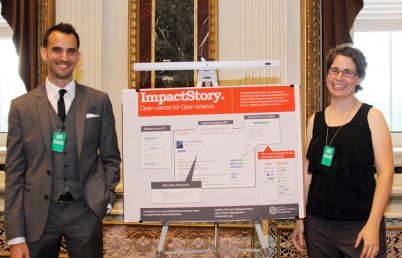We’re thrilled to announce that starting today, Impactstory will be buying a new data stream: Twitter, G+, and Facebook data from Altmetric.com.

Altmetric have spent years working on the thorny problem of connecting tweets with articles. It’s a tough one: papers may be referred to by a dozen different URLs, a DOI, an arXiv ID, and more. But Altmetric have gotten very good at it–at this point, we believe they’re the best in the world. The upshot? Impactstory’s Twitter coverage just got way better. If you’ve got a profile, check it out: there’s a good chance you’ll see new tweets we hadn’t found before.
Along with tweets, we’ll also be leveraging Altmetric’s infrastructure to find mentions in several brand new environments. Is your scholarship being discussed on Reddit, g+, or Facebook? Starting today, Impactstory will let you know.
This is a big win for our users–both because you’ll see cool new data, and because the Impactstory development team can focus hard on adding features where we add the most value. It’s also kind of a cool moment for the nascent industry growing around altmetrics…we’re all starting to mature, focus, and build around our unique advantages.
Last but not least, Jason and Heather are both happy to be working with Altmetric’s founder and CEO, Euan Adie. He gets the Web, he gets how it’s transforming scholarship, and he’s a legit class act and good guy. So here’s to Euan, here’s to more and better data, and here’s to a successful and productive partnership!


